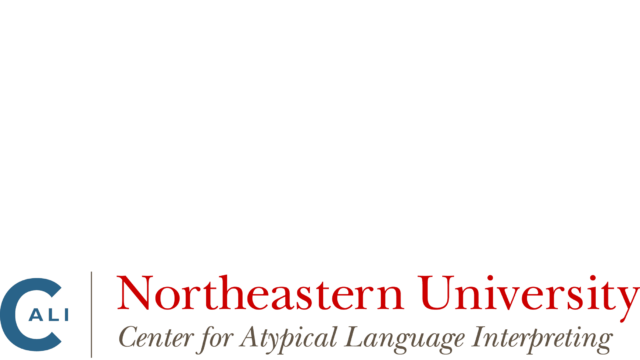Conversation Series Videos

The videos can be used in the following ways:
- View the videos on your own
- Independent learners may download the Learner Handbook to guide their learning experience
- Interpreting educators, mentors, and supervisors are encouraged to explore the Curriculum Guide, which provides an overview of the series and suggested instructional activities
- Take the Unit of Learning (UOL) titled Experiences of BIPOC Interpreters Working with Immigrants and Refugees. The UOL includes viewing all six videos, reflection opportunities, and more and is offered for 0.6 RID PS PPO CEUs.
This product was created using grant funds. Capturing evaluation data is required. Please complete this <20 second, anonymous survey.
Conversation 1: Su Kyong Isakson and Carla Shird
This is a discussion between a Deaf and a Coda interpreter that is focused on the unique experiences of BIPOC[1] interpreters who provide interpreting services to deaf individuals who are immigrants to the United States.
Conversation 2: Mark Morales and Rayni Plaster Torres
In this video, Rayni Plaster, CDI interviews a Deaf Interpreter, Mark Morales, who has extensive experience in interpreting for deaf individuals who immigrate to the United States, primarily from Mexico. Together, they explore the role of the interpreter and how it is adapted to accommodate the needs of deaf individuals who are not fluent in American Sign Language and/or exhibit atypical language use.
Conversation 3: Su Kyong Isakson and Kristina Marie Balao Miranda
In this video, two Coda interpreters of color, whose parents immigrated to the United States, discuss their unique interpreting experiences working within communities comprised largely of deaf immigrants. They focus on how heritage and identity play a significant role in their work as interpreters. As well, they discuss how norms and expectations of their heritage culture informs their decision-making as interpreters.
Conversation 4: Monica Gallego and Rayni Plaster Torres
In this video, Rayni Plaster Torres, CDI interviews Monica Gallego, a certified trilingual interpreter who works extensively with deaf immigrants. Topics addressed include how to create a collaborative environment for interpreted interactions, assessing language and communication access needs, strategies for utilizing the experiences of the Deaf Consumer with their family members as a source of insight and information, engaging with hearing consumers, the role of notetaking during consecutive interpreting and post-assignment, among other topics.
Conversation 5: Jennifer Harvey and Trenton Marsh
In this video, two certified interpreters—one Deaf and one Coda interpreter—discuss their experiences working with deaf consumers who exhibit atypical language use. The interpreters, Trenton Marsh and Jennifer Harvey, discuss the challenges of preparing interpreters to work with a diverse and complex community of language users and the need for more Deaf individuals to be recruited and prepared as interpreters.
Conversation 6: Samond Bishara and Michelle Draper
Samond and Michelle, two certified interpreters, discuss their experiences working with deaf individuals who exhibit atypical language use with a specific focus on deaf children and deaf children who are part of immigrant families.
[1]The acronym BIPOC refers to Black, Indigenous, and people of color. People of color is a general umbrella term that collectively refers to ALL people of color — anyone who isn’t white. But because POC is so broad, it loses the specificity that is useful in identifying and addressing separate struggles faced by people of color with different ethnic backgrounds. BIPOC reflects the desire to draw attention to specific injustices impacting Black and Indigenous people—including those who are Deaf. https://www.healthline.com/health/bipoc-meaning#short-answer